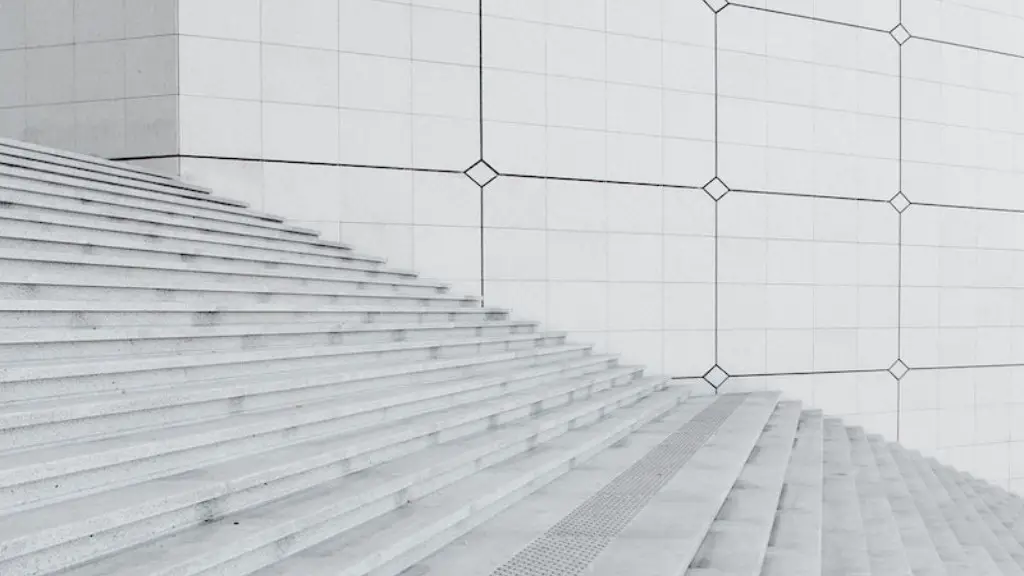When most people think of architecture, they think of grand buildings and stunning structures. But before any building can be built, there must first be a plan. This is where drafting comes in.
Drafting is the process of creating a detailed and precise drawing of an architect’s design. It is a essential part of the architectural process, as it allows for a clear understanding of the design and can identify any potential problems.
Drafting can be done by hand or using computer-aided design (CAD) software. Whichever method is used, the draftsman must have a strong understanding of technical drawing and be able to create detailed, accurate drawings.
So, next time you admire a beautiful building, remember that it all started with a draft.
In architecture, drafting is the process of creating a detailed drawing of a structure, typically to scale. This drawing can be used to provide an accurate representation of the finished product, or to help with the construction process by providing a guide for the placement of various elements.
What is drafting in design?
Drafting is an important tool for engineers and other technical professionals. It allows them to communicate their designs to the people who will build them. Drafting also allows for precise measurements and can be used to create detailed plans.
Design is the entire architectural process of giving life to the client’s ideas through a holistic lens—including both art and science. Drafting is the process of drawing a design, and a drafted set of plans is an important part of the design process. However, drafting is just one part of the design process. The entire design process includes many other important steps, such as conceptualization, feasibility studies, and construction administration.
What is the importance of drafting in architecture
Drafting is a critical part of the construction process, as it allows for the accurate and precise communication of the building plans to all of the different trades and contractors involved in the project. Without drafting, it would be very difficult to ensure that everyone is working from the same set of plans and that the finished product meets all the necessary safety and code requirements.
The main difference between drawing and drafting is that drafting is done to achieve a specific goal, while drawing is done for the sake of art. Drafting is usually technical in nature, while drawing doesn’t have to be. For example, an architect may draft a blueprint for a building, while an artist may simply draw a picture of a building.
What is the main purpose of drafting?
Drafting is an important step in the writing process, as it allows students to develop and refine their ideas. It also helps them to organize their thoughts into a logical sequence. Drafting can be done in many ways, such as brainstorming, making an outline, or simply writing a first draft. No matter what method you use, drafting will help you to improve your writing.
There are three different types of drafting: technical sketch, mechanical drafting, and CAD (computer-aided drafting). Technical sketching is the most basic form of drafting and is often used for quick concept sketches or illustrations. Mechanical drafting is more precise and is used for creating detailed drawings of parts and assemblies. CAD drafting is the most precise and is used to create drawings that can be used for manufacturing or construction.
Does an architect do the drafting?
A draftsman is a professional who prepares drawings which are used to construct homes and other buildings. While an architect typically has 5-7+ years of higher education, a draftsman may have a two- to four- year degree. However, a draftsman is proficient in all aspects of technical and material designs, dimensions, and procedures.
Drafts are important because they allow architects to visually communicate their designs. By having a physical representation of their ideas, it is easier for clients and contractors to understand what is being proposed. Not to mention, drafts also serve as a handy guide for everyone involved in the construction process – from the architects and drafters to the contractors and construction crew. This way, everyone is on the same page and knows what needs to be done in order to bring the project to fruition.
What is a drafter vs architect
While an architect may come up with the initial idea for a building, it is the draftsman who creates the technical drawings that will be used by the construction crew. In other words, the architect is the visionary, while the draftsman is the interpreter.
The “Hit-Go-Hit” technique is a great way to improve your architectural sketches. Simply put, you want to hit the paper with your pen or pencil, then go back and hit it again. This will help you create crisp, clean lines that are more accurate.
Don’t move your pen or pencil by bending your wrist or elbow. Instead, keep your hand and forearm in a straight line. This will help you create straighter lines and will also help to prevent cramping.
Incorporate the use of pen weight into your sketches. This means using a heavier line weight for the outlines of your drawing, and a lighter line weight for the details. This will help to create a sense of depth and will also make your sketches look more professional.
Intersect your lines at the corners. This is a simple way to add interest and depth to your sketches. Simply place your pen or pencil at the corner of two lines and then draw a third line that intersects them.
Trace isn’t precious. If you’re having trouble getting the lines right, don’t be afraid to use a tracing paper. This will help you get the proportions and details right without having to worry about making mistakes.
What is the most important tool in drafting?
The pencil is the most important tool used in drafting because it allows you to create fine lines and details that other tools cannot.
An architect is typically involved in a project from start to finish, helping out with anything from planning, design and documentation, to contract administration and project management. In contrast, a draftsman is someone who produces drawings for construction projects, whether it is a brand new build or a renovation.
What are the two types of drafting
There are many different types of drafting, but the three major kinds are furniture drafting, architectural drafting, and mechanical or machine drafting. Furniture drafting involves creating plans for furniture, while architectural drafting involves creating plans for buildings. Mechanical or machine drafting involves creating plans for machines, such as engines or other mechanical devices.
Basic mathematics, algebra, Cartesian math, geometry, and trigonometry are all used in drafting. These skills are essential in creating accurate, functional, and proportionally correct drawings. A solid math foundation is essential to success in this field.
Is drafting the same as CAD?
CAD software is a valuable tool for professionals in a variety of industries. It allows users to create detailed, accurate drawings and models of potential designs. This can be extremely helpful in the planning and construction phases of projects. Additionally, CAD can be used to create stunning visual effects in the media industry.
In Basic Drafting, you will learn the basic tools for drawing, measuring, and constructing geometric shapes. You will also learn how to create orthographic drawings, dimensioned views, and pictorial drawings.
What is done during drafting
When drafting a piece of writing, the writer should focus on putting his ideas into complete thoughts, such as sentences and paragraphs. He should also focus on organizing his ideas in a way that allows the reader to understand his message.
The primary objectives for a drafting student are accuracy, legibility, neatness, and speed. While accuracy is important for any student, it is especially critical for a drafting student, as even the smallest error can result in a failed project. legibility is also important, as a drafting student’s work will often be read by others, and neatness ensures that the work is presentable. Finally, speed is important as a drafting student often has to meet deadlines.
Final Words
The process of creating a detailed drawing of an architectural design is known as drafting. This drawing is typically done by hand, using pencil and paper, or it may be done electronically, using a computer-aided design (CAD) program.
The process of drafting in architecture is a critical one that involves the creation of a precise and detailed drawing of a proposed building or structure. This drawing is used as a blueprint by builders and engineers during the construction process. A well-drafted blueprint can mean the difference between a successful building project and a failed one.





